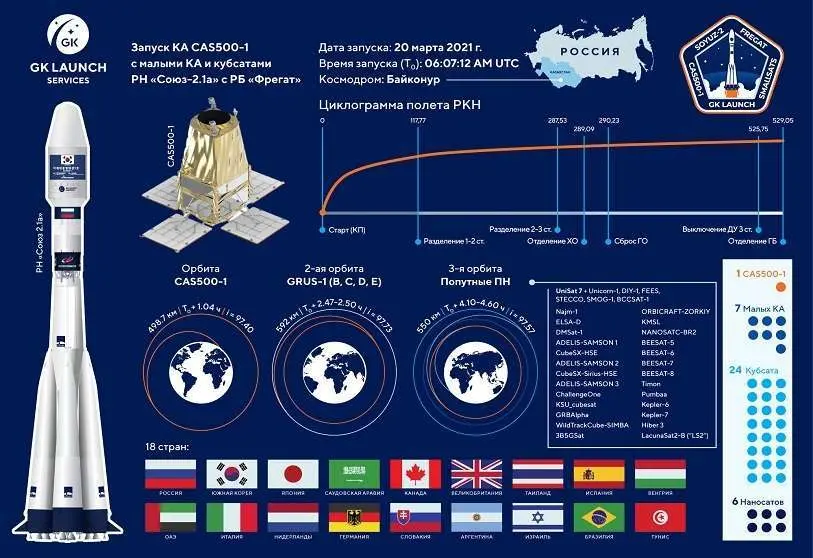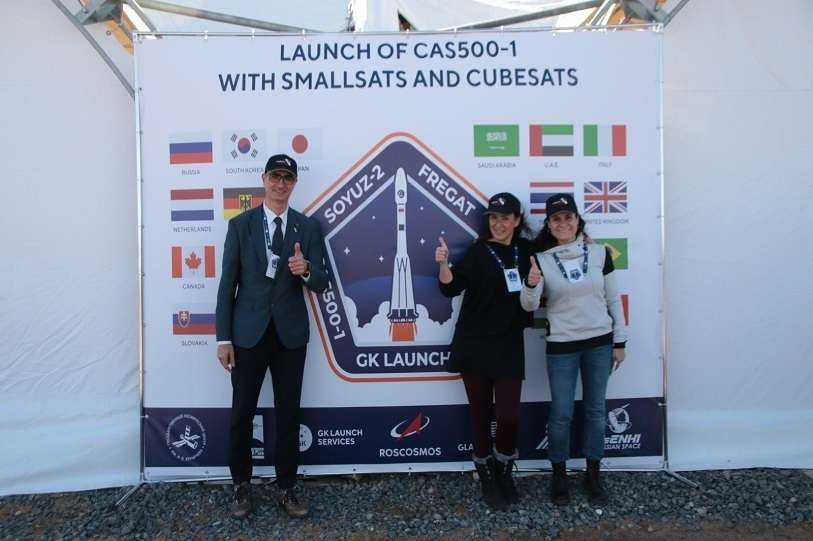Lies from the alleged satellite of the Catalan Government

It is a crude hoax to make the Catalans and the whole world believe that the Government of Catalonia has put its first satellite into orbit. Nothing could be further from the truth.
Neither the satellite christened "Enxaneta" is owned by the Government of Catalonia nor has it been manufactured on Catalan soil.
On the morning of March 22nd, a tiny satellite called 3B5GSat was put into orbit. Its link with the Government of the Autonomous Community of Catalonia was established by a contract signed on January 27th this year.

According to file number IEEC/04/2020 of the Institute for Space Studies of Catalonia (IEEC), the purpose of the 30x10x10 centimetre nano-satellite is to "provide satellite data services" to "provide Internet of Things (IoT) service through wireless communication with terrestrial devices to offer connectivity in parts of the territory that are difficult to access or without coverage by conventional terrestrial networks".
In other words, for two years and for 605,000 euros, the 3B5GSat is limited to providing the IEEC when it flies over Catalan territory - twice a day - with data it has collected from sensors on the ground, which it downloads to the Montsec Astronomical Observatory - some 70 kilometres north of Lleida - where the control and monitoring station has been installed.

However, radio and television media, led by the TV channel TV3, aired and rebroadcast for hours the moments leading up to the launch of the tiny satellite into orbit, which took place early in the morning on March 22.
The liftoff was originally scheduled for Saturday, 20 March, but was delayed for technical reasons. It finally took off on Monday from the Baikonur Cosmodrome in the central Asian republic of Kazakhstan aboard a Soyuz 2 rocket, as scheduled.
The propaganda operation was led by the minister for Digital Policies and Public Administration, Jordi Puigneró, a politician from JuntsXCat, the pro-independence party created in June 2020 by the fugitive from justice former president Carles Puigdemont. Puigneró reiterates on his official Twitter account that "Enxaneta is a nano satellite of the Generalitat".
In order to make it more credible, two parallel manoeuvres have been orchestrated. On the one hand, to rename the satellite. On the other, to send a member of the government, the Secretary for Digital Policies, David Ferrer, to Baikonur.
From some 5,000 kilometres away, David Ferrer has been reporting to his boss via cell phone on the progress of the operations to integrate the satellite into the Soyuz 2 launcher, while at the same time participating in radio and television programmes and sending images of his presence at the cosmodrome.

A picture sent via Twitter on March 22 shows David Ferrer standing next to the huge poster showing the name of the main satellite of the Soyuz 2 rocket - the 500-kilogram Korean CAS-500-1 - surrounded by the flags of the countries also sending satellites into space.
However, the Secretary of Digital Policies of the Government of the Generalitat of Catalonia hides the place where the Spanish flag is located behind his body. The 3B5GSat is a Spanish spacecraft and, for official purposes, it is considered as such by the Russian space institutions and all the world forums related to space.
The same occurs in a second photograph sent by Ferrer to the Catalan councillor, in which David Ferrer changes position, but two young women take his place and continue to hide the place where the Spanish flag is.


And what about Enxaneta, the name by which the satellite owned by Sateliot has been renamed? The name was supposedly the result of a competition among Catalan schoolchildren organised by the children's news programme InfoK on TV3's Super3 channel, the official television channel of the Catalan government.

Sateliot stated that it was "a proposal" made by the IEEC and the Catalan Audiovisual Media Corporation, which they saw no reason to refuse. Whatever the case may be, this is part of the methodology used time and again by the pro-independence authorities of the Catalan government, which consists of using unofficial organisations for their own ends and thus avoiding legal action. And it works for them.

